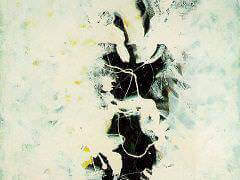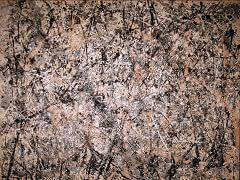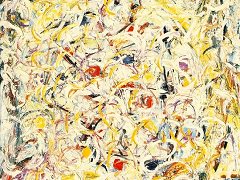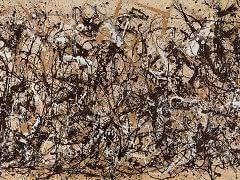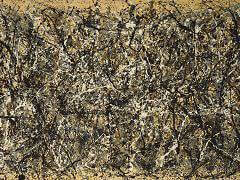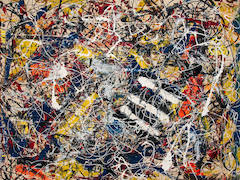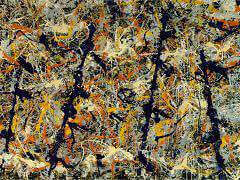Number One, 1950 by Jackson Pollock
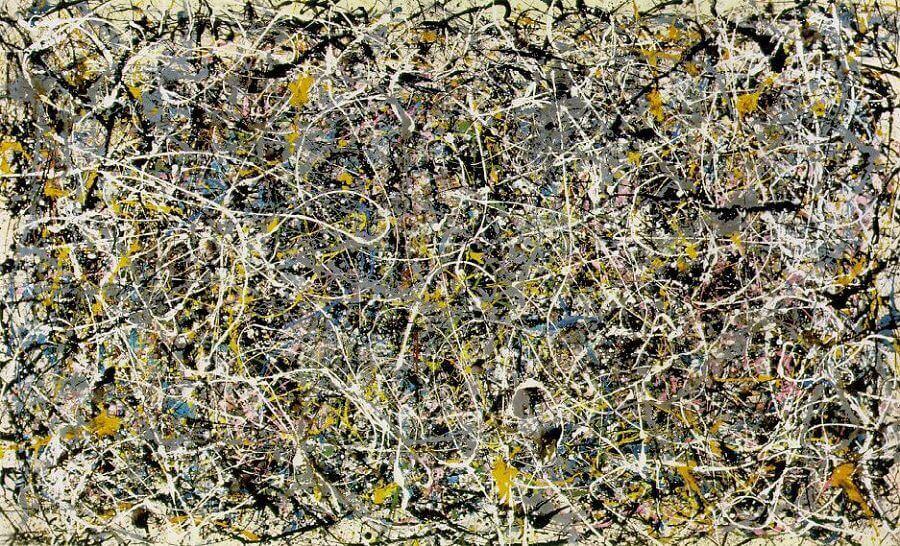
Jackson Pollock's mural-size "drip" paintings met with mixed reactions when they debuted at the Betty Parsons Gallery in New York City in 1948. Sales were dismal, and critical reviews offered skepticism or mild appreciation. Yet only one year later, a Life magazine article featured Pollock, arms crossed and a cigarette dangling from his lips, standing in front of one of his swirled, caffeinated images. The caption under the photograph asked, "Is he the greatest living painter in the United States?"
Number One, 1949 embodies the artistic breakthrough Pollock reached between 1947 and 1950. It was painted in an old barn-turned-studio next to a small house on the East End of Long Island, where Pollock lived and worked from 1945 on. The property led directly to Accabonac Creek, where eelgrass marshes and gorgeous, watery light were a source of inspiration for him.
Pollock's method was based on his earlier experiments with dripping and splattering paint on ceramic, glass, and canvas on an easel. Now, he laid a large canvas on the floor of his studio barn, nearly covering the space. Using house paint, he dripped, poured, and flung pigment from loaded brushes and sticks while walking around it. He said that this was his way of being "in" his work, acting as a medium in the creative process. For Pollock, who admired the sand painting of the American Indians, summoning webs of color to his canvases and making them balanced, complete, and lyrical, was almost an act of ritual.



